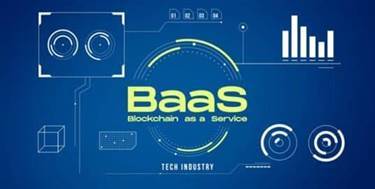I’m calling mine github-actions-heroku-develop, as shown below. Continuous integration is an automation process for engineers and developers that allows us to test new features in our code, making sure they work as expected. In the root folder of your project, create a .github folder and inside that folder, you will create a workflows directory. Continuous Delivery / Continuous Deployment allows the automatic deployment of every code change in a codebase to production.

With GitHub Actions, the pipeline definition is simply a single YAML workflow file inside your repository’s .github/workflows folder. You don’t need to worry about provisioning the pipeline/workflow—the mere presence of the workflow file will cause GitHub to do that for you automatically. This means you don’t need a dedicated tools account in your AWS org. What you do need https://globalcloudteam.com/tech/gitlab-pipeline/ in AWS is to create an OIDC Provider in each target account. This is used to issue temporary IAM credentials to a GitHub Actions workflow run in order to authenticate API calls into that AWS account. You also need to create a GitHubActionsDeployer IAM role in the target accounts with the relevant permissions to deploy resources, run tests, etc, in your AWS account.
Git and CI/CD strategy
If you previously installed Azure Pipelines, select Configure access instead to skip steps 6-8. 2) I noticed in the 2 deploy workflows (push-develop-branch and push-master-branch) you’re doing a full branch deploy. In my package.xml – I only have a couple of Apex classes, and an LWC component – and I’m seeing errors on other Apex classes that’s not included in the branch. I’m using sfdx-git-delta to deploy only the metadata that has been changed by the developer. Now the entire SFDX project is tracked in Git, but only locally. To track this in GitHub, you now need to create what is known as a remote repository.

Deployment – We will deploy the application to the production environment. Release – In this stage, we will release the application in our GitHub repository. If Actions has been activated on your account you will see the actions tab appear on your repo. Click the ‘Merge pull request’ button to merge the branch with the main https://globalcloudteam.com/ code. Normally, we are supposed to do all that, but we didn’t here – because under the hood, the einaregilsson/beanstalk-deploy@v20 action does all the heavy lifting for us. You can also create your own action that takes care of some repetitive tasks and make it available to other developers through the GitHub Marketplace.
Build a Full-Stack ML Application With Pydantic And Prefect
A job is a set of steps that execute on the same runner. By default, a workflow with multiple jobs will run those jobs in parallel. In a nutshell, GitHub CI/CD allows developers to make frequent changes to the codes in the repositories. Whenever code changes are committed, GitHub automatically tests to identify errors before merging the changes in the main code.

For example, you can deploy code to your staging app and later promote that same slug to production. This promotion flow ensures that production contains the exact same code that you tested in staging, and it’s also much faster than rebuilding the slug. For example, the production stage might have the main production app and an admin app running the same version of code, but with different configurations. The master branch is automatically deployed to the pipeline’s staging app for further testing. DevOps is an ever-evolving ecosystem in the development industry, and the CI/CD tools in this domain are highly critical.
Do Pipelines work with Heroku Enterprise Teams?
Before you can use the pullRequest global variable you must ensure you are actually in a Pull Request build job. The best way to do this is to check for the existence of the CHANGE_ID environment variable. This trigger would be of limited usefulness for people wishing to build public GitHub/Jenkins bots, using pipeline scripts. As there is no way to ensure that a Pull Request’s Jenkinsfile contains any triggers.

After that, the built solution is archived and finally published for the release pipeline to access. With the Azure Pipelines extension for Visual Studio Code, you get a great YAML editing experience, including support for IntelliSense. In this lab, we’ll be illustrating the integration and automation benefits of Azure DevOps. We will take on the role of helping a fictitious airline—Contoso Air—that has developed their flagship web site using Node.js. It can also trigger builds in Jenkins when changes are pushed to the GitHub repository.
Conditional monorepo builds
You will have the knowledge to either create your own home-grown CI/CD system, or learn exactly what to look for when shopping for a Salesforce DevOps tool. After the GitHub workflows is finished, open the terminal in your local machine to get the Kubernetes pod. From the folder where you have saved the VKE configuration file, create a file named clusterrole.yaml. Here you check whether the response status code of the authentication API is 200 if you provide the correct user credentials. Here you have a test that checks whether the app can decode the encoded token correctly. Create a requirements.txt file that stores all the dependencies you need to implement the app.
- A DevOps pipeline is designed to facilitate the faster delivery of value to end users through a set of automated processes.
- You can apply Multifactor Authentication to protect your data on GitHub.
- When the change is ready, it’s merged into the codebase’s master branch.
- Know that the CI server supports checking new code commits in a GitHub repository.
- Continuous Delivery, on the other hand, is a set of software development practices that ensures the deployment of code to production while performing efficient testing in the process.
- The Pull Request’s job/build must have run at least once for the trigger to be registered.
Furthermore, what if you want to upload 1000 different applications or your application is beginning to handle 1billion concurrent requests? A job can only be executed by a GitHub Action when some event happens. Remember, we mentioned that you tell GitHub Actions what job to execute through a configuration file right?
How to: Deploy Delta Changes
You already created the secret for KUBERNETES_SECRET in the step « Create a secret for the service account to store GitHub token, » so please ignore it. Note that the app needs to connect with the actual database since you run the integration test. You need to define the environment variables before running the test. Then from the access token the users got after signing in, they can add, update, read, and delete their movies through the app. The “Clone Repository” stage checks out the code from a GitHub repository using the repository URL and branch name from the environment variables.
A11y: GitHub Brings Accessibility to 85% of Open Source – The New Stack
A11y: GitHub Brings Accessibility to 85% of Open Source.
Posted: Thu, 18 May 2023 14:33:55 GMT [source]
It remarkably saves developers’ testing and debugging time and allows them to focus on code building. Especially collaboration is simplified in the GitHub CI/CD. In this tutorial, you should have learned about GitHub CI/CD nuances, its features, GitHub actions, etc. Also, you must have learned how to get started with GitHub and create workflows with GitHub Actions. Now, let’s repeat the same process to create a new app, which we’ll name github-actions-heroku-prod.
Why I switched from AWS CodePipeline to GitHub Actions
We also have a testcase written for the view that we have defined, but most importantly we’ve pushed our shiny change to GitHub. Cloud computing platforms like AWS exist to save you all that stress. These platforms already have numerous of these special computers setup and kept in buildings called data centers. For example, what if you just want to test out the application? You’d go through all the stress of setting up a hardware infrastructure just for testing?

Laissez un commentaire